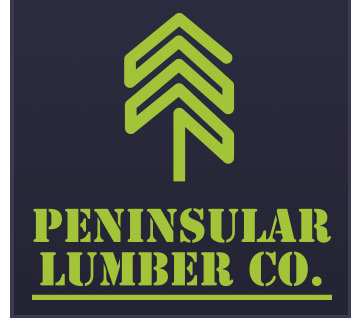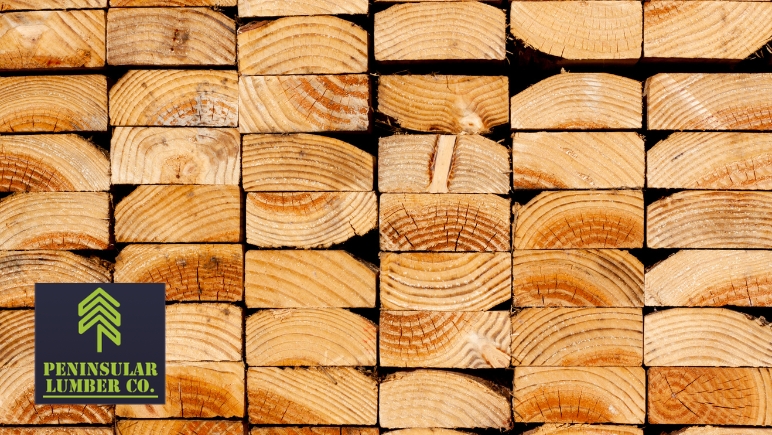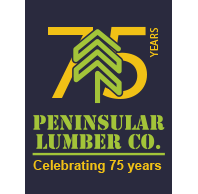Find out why dimensional lumber has rounded edges and learn about its benefits.
At Peninsular Lumber, your go-to lumber company in Tampa, we’re often asked, “Why does dimensional lumber have rounded edges?” Well, there’s more to this design element than meets the eye. Dimensional lumber has rounded edges for a variety of reasons, such as safety, convenience, being less easy to damage, and much more.
Why Does Dimensional Lumber Have Rounded Edges?
The rounded edges on dimensional lumber serve a multitude of purposes. Not only do these eased edges contribute to the safety of the material, but they also enhance its durability. The standard feature of a radius edge is found in most framing lumber and pressure-treated wood produced by any lumber company. This design principle has been followed for many years, and it’s improved the performance of lumber in a variety of ways.
Here are some of the main reasons why dimensional lumber has rounded edges:
Make Boards Easier to Handle
The convenience factor of rounded edges is undeniable. When lumber is used in active construction environments, like in custom home building, the safety of the handlers is paramount. Sharp corners can easily scrape or cut the skin, and rounded edges reduce this risk significantly. This is especially beneficial for DIY enthusiasts who may not have as much experience.
A Much Better Appearance
Visual appeal is another key reason dimensional lumber has rounded edges. The gentle curve of the edges gives a professional and finished appearance to the lumber, making it suitable for exposed applications in interiors and exteriors. Whether you’re building a deck or crafting furniture, rounded-edge lumber can contribute to the overall look and feel of your project.
Prevents Splinters
Working with lumber can lead to the inconvenient and painful problem of splinters. On the other hand, the chances of splinters are significantly reduced by rounding the edges of the construction lumber. Rounded edges are a feature that creates a safer working environment for everyone involved, from the carpenters in the lumber yard to the DIY builders at home.
Improved Structural Integrity
Structural integrity is crucial in construction. Sharp corners or squared edges can create weak points in the lumber that may crack or split under stress. Rounded edges distribute stress more evenly across the surface of the wood, enhancing the overall strength of the piece of lumber. These rounded edges can be particularly beneficial in load-bearing applications such as framing or flooring.
More Fire Resistant
The benefits of rounded edges on lumber even extend to fire resistance. Sharp corners can catch fire more easily, but the smooth, rounded surface of the lumber is less prone to ignition. Rounded edges can contribute to a building’s overall fire safety profile, providing an added level of protection in the event of a fire.
Less Easily Damaged
The vulnerability of sharp edges to damage is another factor that makes rounded edges more desirable. Sharp corners are more prone to chipping, denting, or splintering during transport or installation. However, the use of rounded edges means the lumber maintains its integrity and appearance for much longer, making it a more durable choice.
Easier to Paint and Seal
Rounded edges also make the process of painting and sealing lumber more efficient. Paint or sealant can be evenly distributed over the smooth, rounded surface, which results in a consistent finish. This is particularly important when working with pressure-treated lumber, which often requires an additional protective layer to resist moisture and decay.
Makes Drywall Installation Easier
The rounded edges of dimensional lumber are excellent when it comes to drywall installation. Sharp corners can potentially puncture or rip the drywall, causing unnecessary damage and extra work. Rounded edges offer a smoother surface for the drywall to adhere to, resulting in a cleaner and quicker installation.
Lower Fabrication Costs
The manufacturing of rounded edges is a cost-effective process. A perfectly square edge requires precise machining, which can be time-consuming and expensive. Lumber companies can reduce fabrication costs by rounding the edges during milling, making dimensional lumber a cost-effective choice for builders.
Reach Out to Peninsular Lumber to Learn More
At Peninsular Lumber, we are always ready to provide you with valuable insights and quality building materials for your projects. Whether you’re a custom home builder or a DIY enthusiast, our expert team at our lumber yard is ready to assist you in selecting the best materials for your project. We can also answer all of your building questions, such as “Why does dimensional lumber have rounded edges?” and much more.
Reach out to Peninsular Lumber today and visit our lumber store in Tampa.



